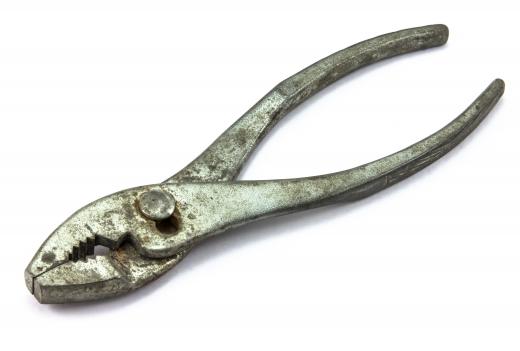A screw extractor is a tool used to remove broken or damaged screws, bits, and bolts. When the head of the screw breaks off or gets too damaged to use, the screw can be very difficult to remove from an object. The same is true for a drill bit that breaks off and becomes lodged in wood or metal. A screw extractor allows users to remove these obstructions and continue work on the project while creating minimal damage to the surface of the object.
The most basic screw extractor model resembles a standard drill bit. It comes in different sizes and consists of very hard metal. The tip of the screw extractor tapers to a sharp point, while the bod is threaded like a screw. The top of the tool is square, allowing the user to choose from different methods of operation, including drills or manual handles that fit over the top of the handle. Some users may simply use a pair of pliers to turn the extractor.

To remove a broken screw, users start by drilling a pilot hole into the top of the broken screw using a standard drill bit. This hole serves as a guide for the screw extractor. Users must then choose the correct extractor size to minimize damage to the surrounding surface. Typically, the extractor should be close in diameter to the screw it's used to remove. Many screw extractor sets contain a variety of sizes to meet different needs.
The screw extractor should be mounted onto a manual handle or drill during use. Workers insert the tip of the extractor into the pilot hole, then turn the tool clockwise, as if screwing in a screw. This causes the tip of the extractor to dig into the broken screw and grasp the head or shank. The screw extractor is threaded backward, so turning it clockwise causes it to turn the screw counterclockwise. This unscrews the broken screw so it can be removed by hand from the hole.
Another type of screw extractor resembles a hollow cylinder with saw-cut teeth along one end. These devices fit onto a standard drill. Users should center the tool around the broken screw, then turn the drill on as if screwing in a regular screw. This causes the extractor to bore out the material around the damaged screw, removing both the wood and broken fastener. The wood can then be plugged or patched so that work can continue on the project.
